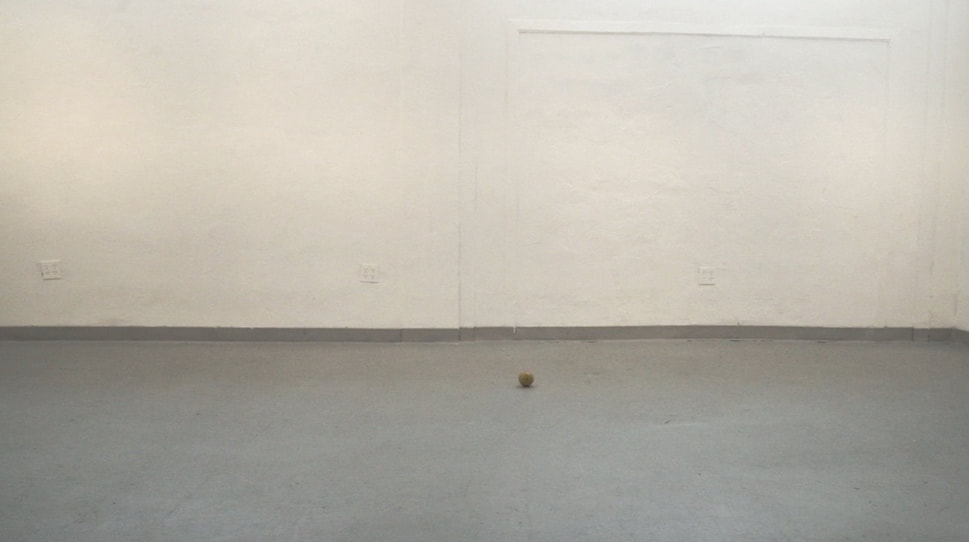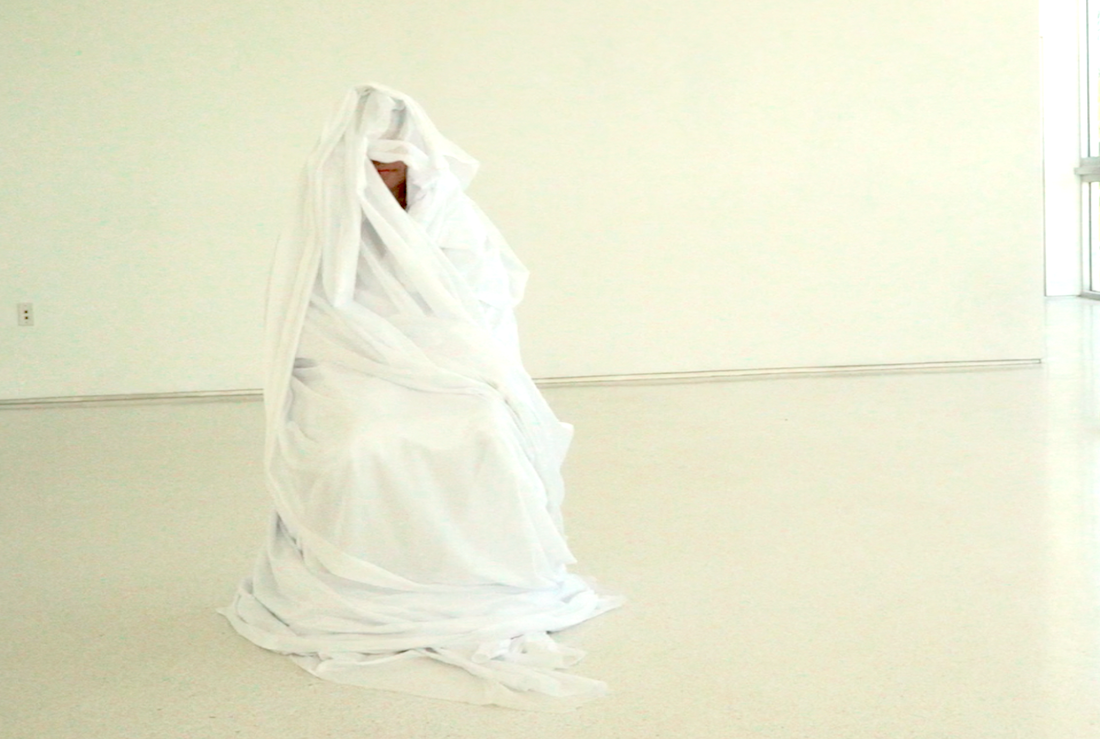|
Artist Statement
Veronica Fazzio is an Artist and Educator. From Buenos Aires, she now lives in South Florida. Social Sculpture practitioner, Fazzio works with her non-human colleague (the camera) in a collaboration that results in an assemblage, such assemblage includes the human and non-human, animated and in-animated participants. Fazzio and the camera pronouns are They/their. Most interested in memories, everyday actions, and post-human theories. They call the objects produced by-products, which usually are low-resolution photographs, sound, and videos. Fazzio earned her Ph.D. practice-based research in plastic and contemporary arts from the University of Plymouth, UK in 2021, they also have an MFA in VA from the Art Institute Miami International University of Art & Design, USA. Back in Buenos Aires Fazzio earned a teaching degree in Artes Plasticas at Escuela Nacional de Bellas Artes Rogelio Yrurtia and a Photography and Audiovisual Techniques degree at E.D.A.F. |
|
RESEARCH ABSTRACT
Joseph Beuys, the originator of the term ‘Social Sculpture’, stated that the objects he made were stimulators for the formation of thoughts, i.e. that they were intended to mold or to shape thoughts. Beuys believed that the essence of Social Sculpture was to shape and mold the world by working with invisible materials to make new thoughts. His aim was to develop an evolutionary process to share his ideas about the universal nature of plasticity, and thus the ability we all have to be constantly transformed.
This practice as research PhD explores Social Sculpture as a contemporary process of transformation. The evolution of my practice from the start of my PhD has moved from producing objects in my studio (and then subsequently destroying them), to working with participants of different ages and from different institutions in a variety of settings. Through this journey I expanded my understanding of plasticity and came to recognise that my practice too could be understood as ‘Social Sculpture’.
In this iteration of Social Sculpture, plasticity manifests as ‘liveliness’, the “live” element consists of being fully present in both senses: i.e. being in the present time (simultaneously) and being present in space, being there physically. In my work, I perform for and with the camera: I cannot make Social Sculpture without the camera, as it crystallizes the process of making Social Sculpture - its presence opens the space for the self-awareness that making Social Sculpture requires to come into being.
While the camera has the potential to be a documentation tool, and performs this role for me, in my work the camera is more than that: it is a presence that offers many possibilities, each of which affects the performance itself. I perform for the camera and with the camera. I argue that the objective lens is subjective, even though is more objective than subjective, because there is no consciousness in it that gives the capacity of subjectivity. In conclusion I can only talk about the impossible objective (noun) of the objective (lens) to be objective (adjective).
Joseph Beuys, the originator of the term ‘Social Sculpture’, stated that the objects he made were stimulators for the formation of thoughts, i.e. that they were intended to mold or to shape thoughts. Beuys believed that the essence of Social Sculpture was to shape and mold the world by working with invisible materials to make new thoughts. His aim was to develop an evolutionary process to share his ideas about the universal nature of plasticity, and thus the ability we all have to be constantly transformed.
This practice as research PhD explores Social Sculpture as a contemporary process of transformation. The evolution of my practice from the start of my PhD has moved from producing objects in my studio (and then subsequently destroying them), to working with participants of different ages and from different institutions in a variety of settings. Through this journey I expanded my understanding of plasticity and came to recognise that my practice too could be understood as ‘Social Sculpture’.
In this iteration of Social Sculpture, plasticity manifests as ‘liveliness’, the “live” element consists of being fully present in both senses: i.e. being in the present time (simultaneously) and being present in space, being there physically. In my work, I perform for and with the camera: I cannot make Social Sculpture without the camera, as it crystallizes the process of making Social Sculpture - its presence opens the space for the self-awareness that making Social Sculpture requires to come into being.
While the camera has the potential to be a documentation tool, and performs this role for me, in my work the camera is more than that: it is a presence that offers many possibilities, each of which affects the performance itself. I perform for the camera and with the camera. I argue that the objective lens is subjective, even though is more objective than subjective, because there is no consciousness in it that gives the capacity of subjectivity. In conclusion I can only talk about the impossible objective (noun) of the objective (lens) to be objective (adjective).

An interactive project, inspired in both The Babel Tower story and the recent attacks in Europe and Middle East.
The sound of the video features several women's voices. All of them are reading a homemade bread recipe; each one in her own language.
The pre-recorded video, which depicts an image of me seated and reading my grandmother’s homemade bread recipe from my mother’s cookbook, will be projected on to the screened, front windows of the ACSF 924 building during Art week. The screen is divided into three panels. In one of the three panels, I appear standing and reading the same recipe live, in real time. In order to accomplish this live component, I will stand in front of a green screen in a room, from which my image will be projected onto the one third of the three panels screen alongside the other two other images of me. Simultaneously, pedestrians on Lincoln Road (where the screen will be installed), will be invited to read a homemade bread recipe (in various languages) while seated in a red chair, identical to the red chair in the video. The images of pedestrian participation will appear intermittently on the screen, alternating with the image of my live performance; either me or the person reading will appear on the third part of the screen.
There are no statements for this piece but rather provocative shots. Womanhood and bread as unifiying, universal elements; language as symbolic representation of separation and division. Issues of cause and effect are explored as well.
The different vocal recordings are manipulated as sound tracks, creating a sense of space and giving control to each language during different moments in the chair.
The sound of the video features several women's voices. All of them are reading a homemade bread recipe; each one in her own language.
The pre-recorded video, which depicts an image of me seated and reading my grandmother’s homemade bread recipe from my mother’s cookbook, will be projected on to the screened, front windows of the ACSF 924 building during Art week. The screen is divided into three panels. In one of the three panels, I appear standing and reading the same recipe live, in real time. In order to accomplish this live component, I will stand in front of a green screen in a room, from which my image will be projected onto the one third of the three panels screen alongside the other two other images of me. Simultaneously, pedestrians on Lincoln Road (where the screen will be installed), will be invited to read a homemade bread recipe (in various languages) while seated in a red chair, identical to the red chair in the video. The images of pedestrian participation will appear intermittently on the screen, alternating with the image of my live performance; either me or the person reading will appear on the third part of the screen.
There are no statements for this piece but rather provocative shots. Womanhood and bread as unifiying, universal elements; language as symbolic representation of separation and division. Issues of cause and effect are explored as well.
The different vocal recordings are manipulated as sound tracks, creating a sense of space and giving control to each language during different moments in the chair.


